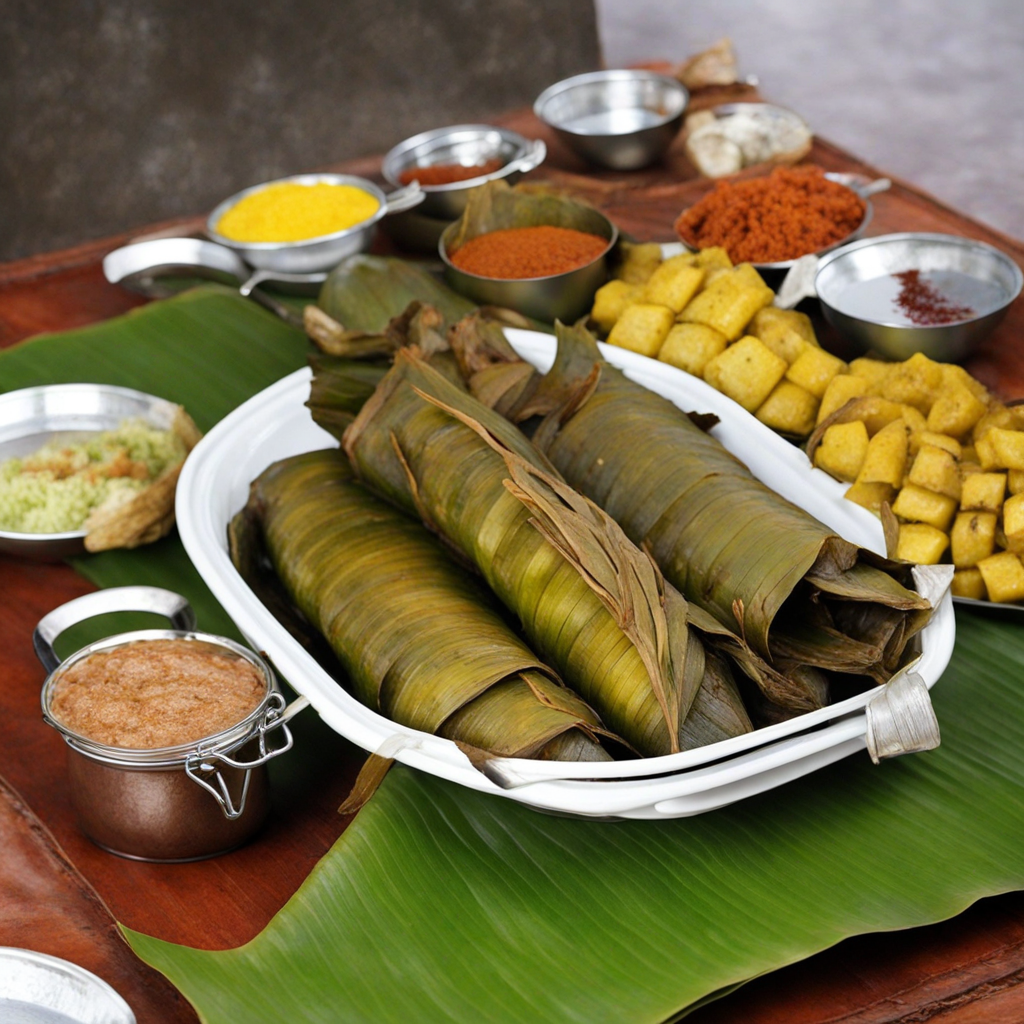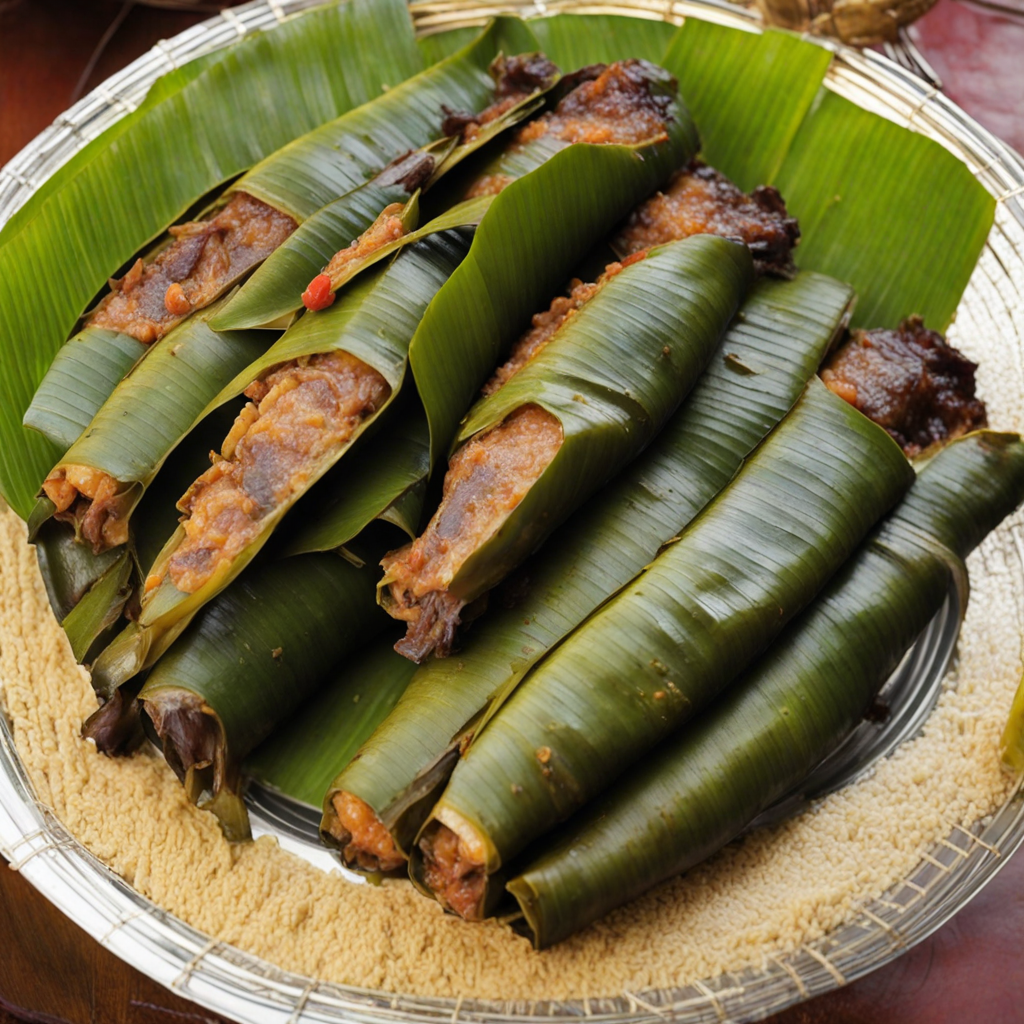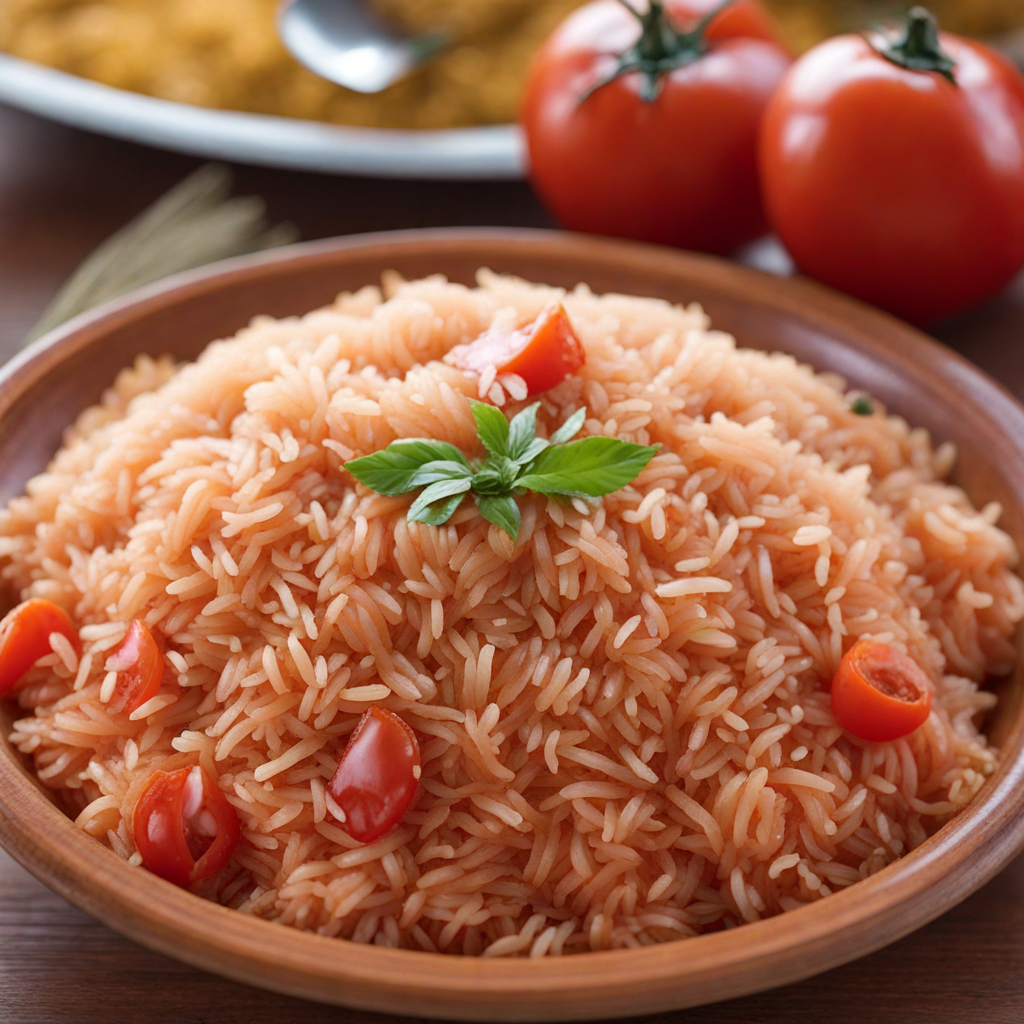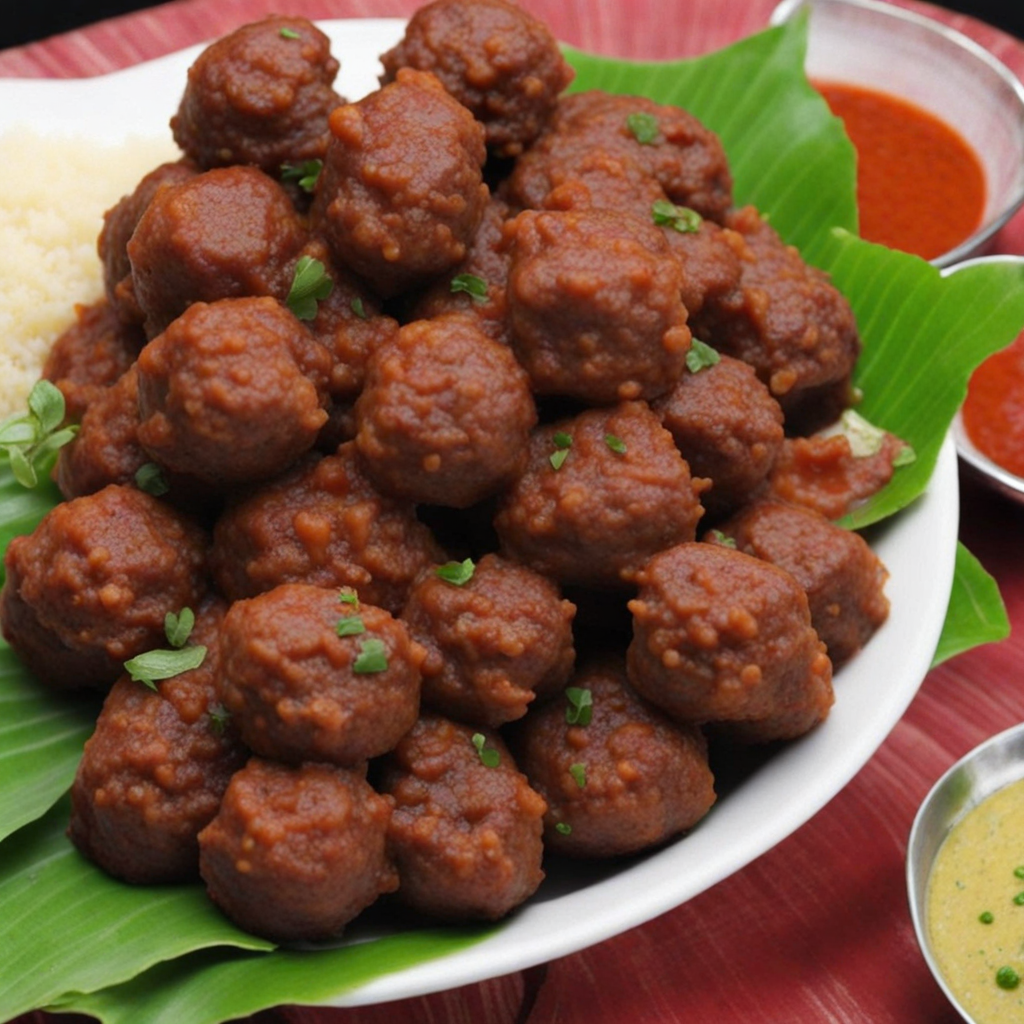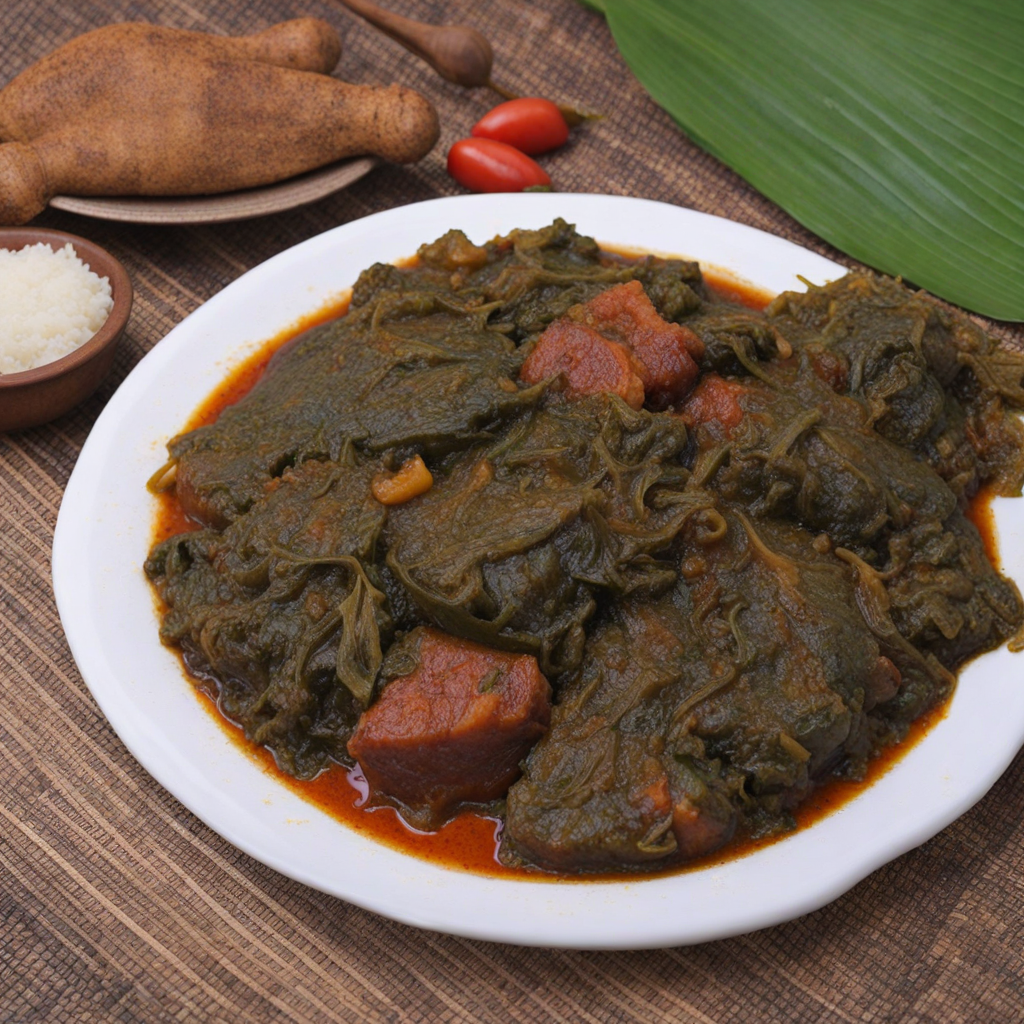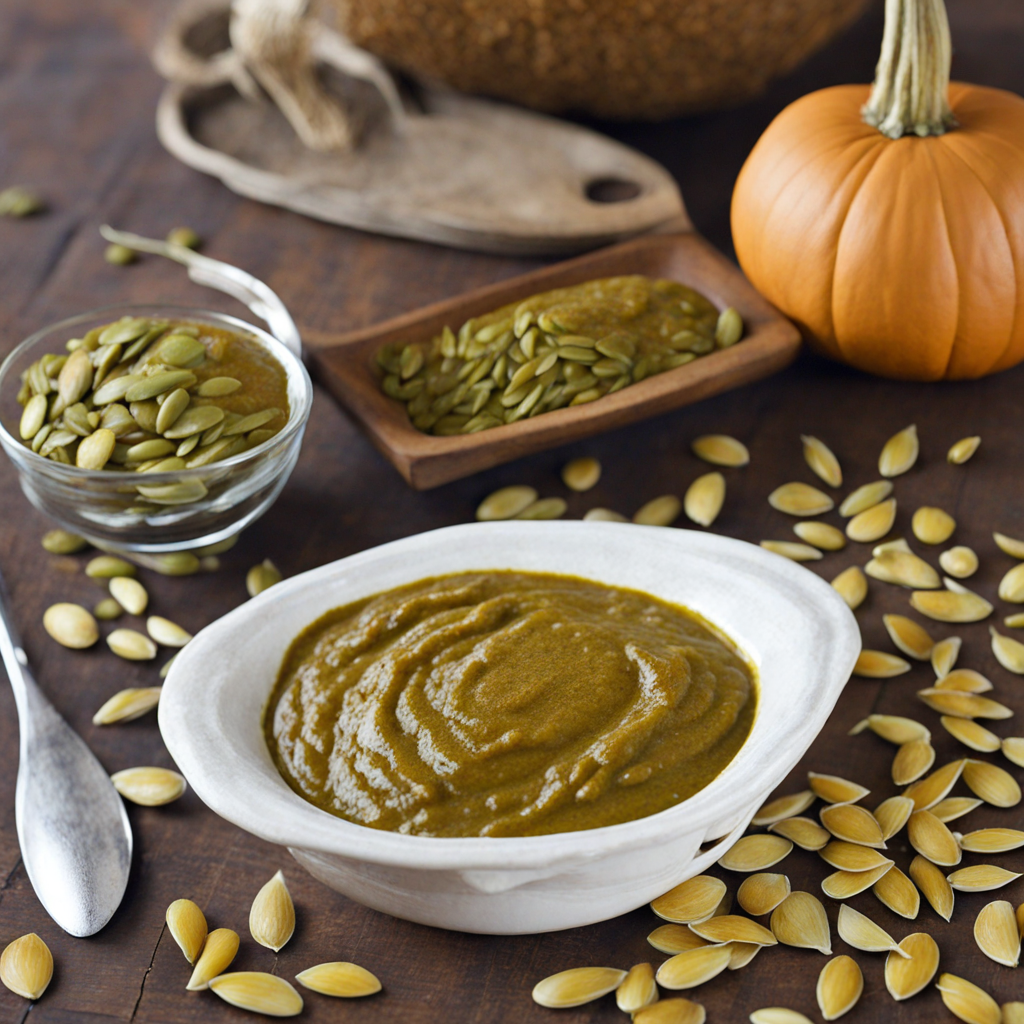Maboké
Maboké is a traditional dish from the Central African Republic that highlights the region's rich culinary heritage and the use of local ingredients. This unique dish typically features fish, often tilapia or another freshwater variety, which is marinated and then wrapped in banana leaves. The marination process usually includes a blend of spices, herbs, and sometimes even groundnut paste, which adds a distinct nutty flavor. Once wrapped, the fish is steamed, allowing it to absorb the fragrant aromas of the banana leaves while remaining tender and moist. What sets Maboké apart is not just its preparation but also the way it is enjoyed. The dish is often served with a side of vegetables, rice, or plantains, creating a balanced meal that showcases the fusion of flavors. The steaming process infuses the fish with the earthy notes of the banana leaves, while the spices bring a gentle warmth and depth. Each bite offers a harmonious blend of textures and tastes that reflect the vibrant culture of the Central African Republic. As you explore Maboké, you'll discover that it embodies the spirit of communal dining, often enjoyed during gatherings and celebrations. The act of sharing this dish among family and friends enhances its appeal, making it not just a meal, but an experience. With its combination of fresh ingredients and traditional techniques, Maboké is a delightful culinary adventure that invites you to savor the flavors of Central Africa.
How It Became This Dish
The History of Maboké: A Culinary Gem from the Central African Republic Maboké, a traditional dish from the Central African Republic (CAR), represents much more than just a meal; it embodies the rich cultural tapestry and historical evolution of the region. Known for its unique preparation method and the flavors derived from local ingredients, Maboké is a dish that has been lovingly passed down through generations, reflecting the agricultural practices, cultural beliefs, and social customs of Central African communities. #### Origin and Ingredients The word "Maboké" translates to "wrapped" in the local Lingala language, aptly describing the dish’s preparation method. Traditionally, Maboké consists of fish, particularly tilapia or catfish, marinated in spices and wrapped in banana leaves before being steamed. The use of banana leaves is significant; it not only imparts a unique flavor to the fish but also showcases the sustainable practices of local cooking. The origins of Maboké can be traced back to the indigenous communities of Central Africa, where fishing and agriculture were vital to survival. The Central African Republic is blessed with abundant rivers and lakes, making fishing a central part of life for many communities. The preparation of Maboké reflects the ingenuity of local people in utilizing the resources available to them. Alongside fish, local vegetables, tubers, and grains are often incorporated, depending on seasonal availability and community preferences. #### Cultural Significance Maboké is more than a staple food; it is a dish intertwined with the cultural identity of the Central African Republic. It serves as a communal meal, often prepared for family gatherings, celebrations, and special occasions. The process of making Maboké is typically a communal affair, where family members come together to clean, marinate, and wrap the fish, fostering a sense of community and shared heritage. In many Central African cultures, food plays a crucial role in rituals and ceremonies. Maboké is often prepared during significant life events such as weddings, births, and communal feasts. The act of sharing this dish symbolizes unity and togetherness, reinforcing social bonds among families and communities. Moreover, Maboké is associated with the hospitality of the Central African people. When guests arrive, it is customary to offer them Maboké as a sign of respect and welcome. The dish transcends mere sustenance; it becomes an expression of generosity and warmth, foundations of Central African culture. #### Development Over Time The evolution of Maboké reflects broader historical shifts in the Central African Republic. Colonial influences and globalization have introduced new ingredients and cooking methods, yet traditional practices have largely preserved the essence of this beloved dish. During the colonial period, the introduction of new spices and cooking techniques by European settlers began to impact local cuisines. However, the core elements of Maboké remained unchanged. In many cases, local cooks adapted these new influences to enhance their traditional recipes, creating a fusion of flavors that respects both heritage and innovation. In recent decades, the rise of globalization has further transformed the culinary landscape. Access to international markets has made diverse ingredients more available, allowing for variations of Maboké that can cater to different palates. While the traditional recipe remains popular, adaptations have emerged, incorporating spices from other regions and experimenting with different types of fish, including imported varieties. Additionally, the growing interest in food tourism has brought international attention to Central African cuisines, including Maboké. Chefs and food enthusiasts from around the world have sought to learn about and experience authentic Central African dishes, leading to a revival of interest in local culinary traditions. This resurgence has encouraged younger generations to embrace their culinary heritage, ensuring the continued relevance of Maboké in contemporary society. #### Contemporary Context In the present day, Maboké continues to be a beloved dish in the Central African Republic. It is commonly found in local markets and restaurants, often served alongside staples like cassava, plantains, and rice. The dish has also gained popularity among the diaspora, where Central Africans living abroad prepare Maboké as a means of connecting with their roots and sharing their culture with others. Moreover, Maboké showcases the potential for food to bridge cultural divides. As global interest in diverse cuisines grows, this dish has found new audiences, inviting culinary exploration and appreciation. Food festivals and cultural events highlighting Central African cuisine have emerged, allowing people from different backgrounds to experience the flavors and traditions of the region. #### Conclusion Maboké is a culinary treasure that encapsulates the history, culture, and resilience of the Central African Republic. From its humble origins as a communal dish prepared using local resources to its contemporary adaptations and international recognition, Maboké represents a living tradition that continues to evolve while retaining its cultural significance. As we celebrate Maboké, we honor not just a delicious meal but also the stories and relationships that it nourishes. It is a reminder of the importance of food in shaping identity and community—a testament to the enduring power of culinary traditions that connect us all. In every bite of Maboké, one can taste the rich history and vibrant culture of the Central African Republic, making it a dish worthy of both respect and celebration.
You may like
Discover local flavors from Central African Republic


